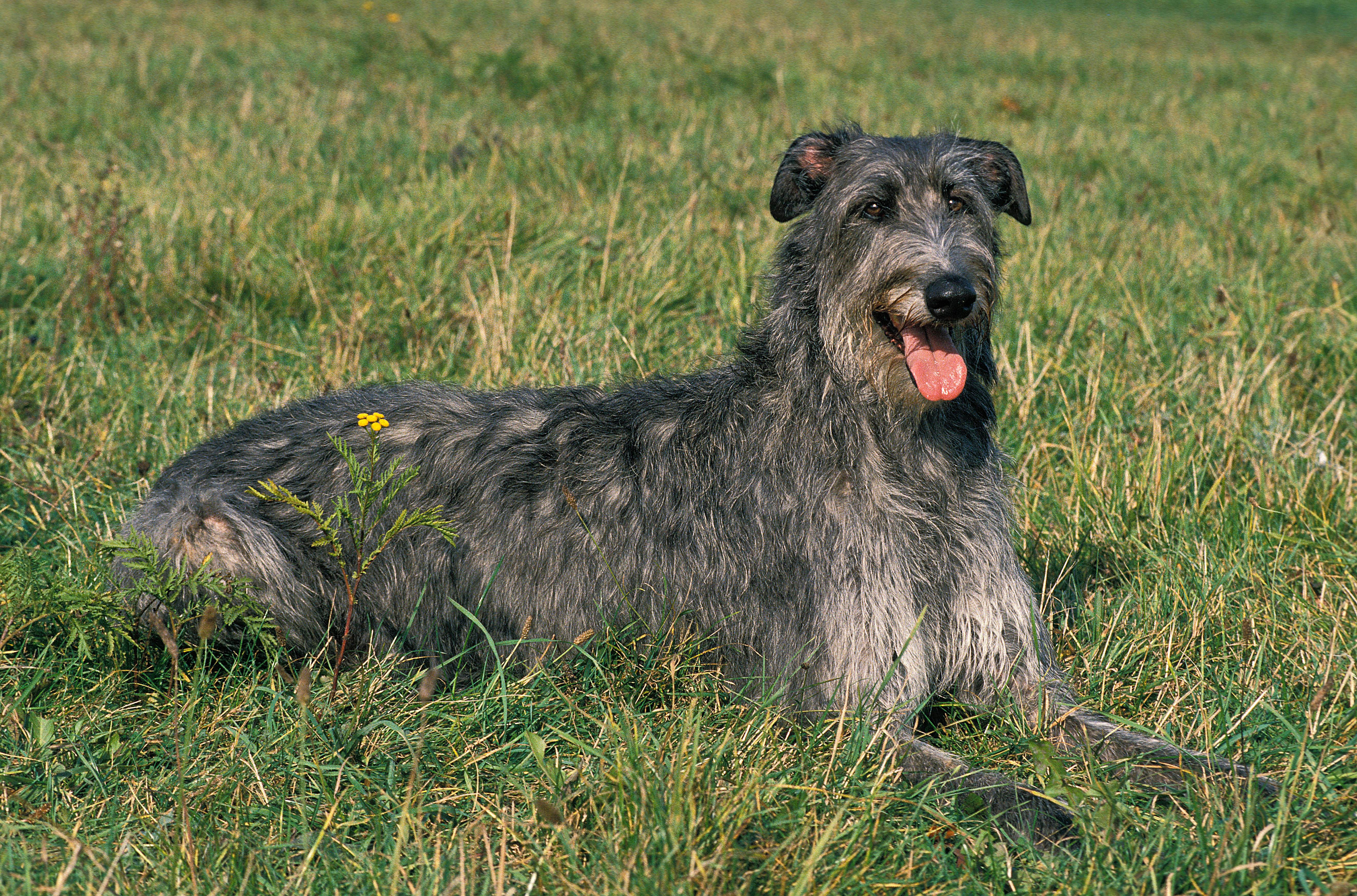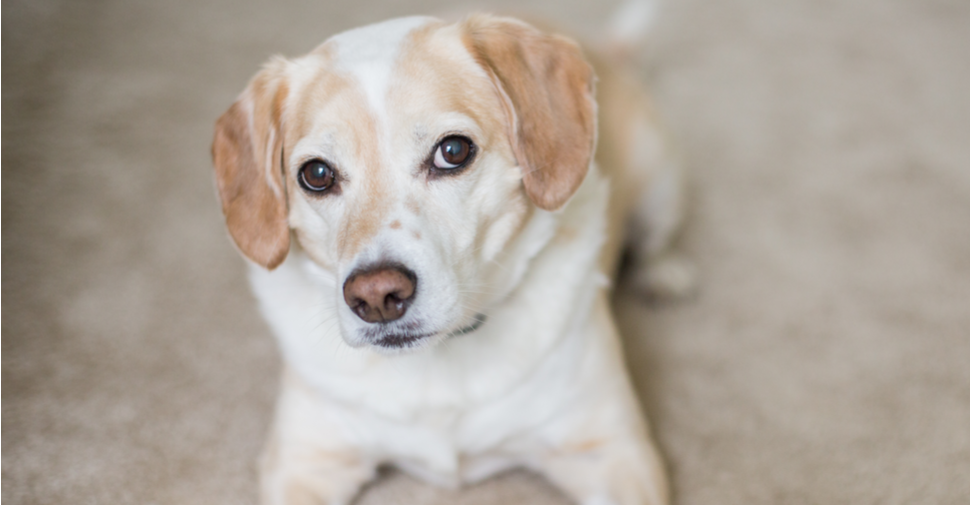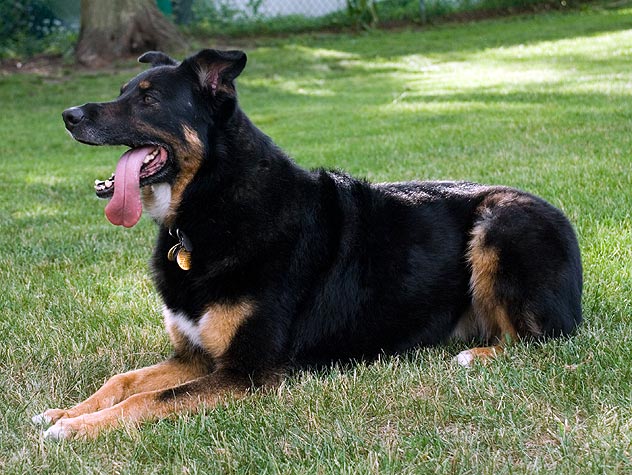Scottish Deerhound
The Scottish Deerhound looks like a larger and heavier Greyhound. Unlike a Greyhound, which is focused on speed, the Deerhound has more endurance, ready to run for long distances. They have a trotting gait and a harsh weather-resistant coat. They love colder climates and are intelligent dogs that are gentle and calm indoors.
Breed characteristics carousel
Learn More
Need to Know
- Dogs suitable for experienced owners
- Need to be aware of potential health issues
- Enjoys active walks
- Large dog
- Minimal drool
- Requires frequent grooming
- Quiet dog
- Welcomes everyone happily
- Could have issues with unknown dogs but gets along with known dogs
- May need additional training to live with other pets
- May need additional supervision to live with children
- Needs a fenced-in yard, preferably in suburban or rural areas
- Cannot be left alone
- AKC Registered Breed

Personality
While a large dog, the Scottish Deerhound is gentle and friendly. They can be quiet and more reserved than other hound breeds and love to shower their family with affection. They are careful around children and have a quiet sense of humor.
The Scottish Deerhound is likely an ancient breed, developed from the Greyhound, although records of them only date back to about the 16th century. They were not allowed to be kept by anyone except royalty, which contributed to the breed’s decline in the mid-1700s. By the mid-1800s, the breed was restored, although it was decimated again in World War I. The population of Scottish Deerhound dogs has remained low since then.
Scottish Deerhounds have friendly personalities and like people, making them good companion dogs. They are calm indoors but can be like a moth to a flame outside if they find something of interest. Owners should have some sighthound experience and enjoy physical activity.
Exercising Deerhound puppies should be done with care. They should not be going up and down a lot of steep inclines to prevent injuries. Adult Scottish Deerhound dogs are calm inside but have a lot of energy outside and love to expend it by running free. Mental stimulation is important to these curious dogs, especially when it comes to investigating new things or smells.
Tall rather than stocky, the Scottish Deerhound doesn’t need a lot of space. They can reach tabletops and counters, though, so keep that in mind. They have long backs, though, and can find tight spaces awkward. They enjoy stretching out, so a large bed or crate is a good choice. A fenced-in yard is a must so that the Scottish Deerhound dog can run free.
Regular grooming is required for the Scottish Deerhound by brushing down a couple of times a week. The dog’s coat might need to be hand-plucked once or twice a year.
The Deerhound has a short attention span so training needs to be engaging for them. They do not like to do repetitive tasks. The basics need to be mastered, such as recall, lying down, and walking on a leash. It’s a good idea to teach these tall dogs not to jump up on counters and people. They love chasing, so use chase toys as rewards to keep them motivated.
Deerhounds are devoted and affectionate with their families but reserved with strangers. If given respect and space, the Deerhound can make friends easily. They are good with children but might be too big for small children.
The cost of a Scottish Deerhound from a breeder is significantly more than the cost of adopting one from a local shelter or rescue. The adoption fee usually covers additional items such as spaying or neutering, vaccines, and microchipping.

Learn more about feeding and caring for your Scottish Deerhound on Purina.
Did You Know?
- The Scottish Deerhound is often mistaken for the Irish Wolfhound. The Deerhound was used to create the Irish Wolfhound.
- Padfoot in two Harry Potter films, was played by a Scottish Deerhound dog named Cleod.


